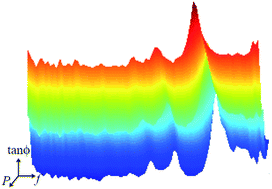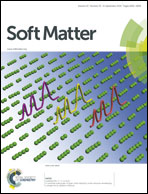A universal scaling law of grain chain elasticity under pressure revealed by a simple force vibration method†
Abstract
The grain contact force, the key player in determining the mechanical properties of grain materials, depends on the elastic modulus and deformation (δ) of grains. However, our knowledge on their relationship in a three-dimensional granular medium is limited mainly owing to the difficulty of realizing direct experimental investigation. Using a simple force vibration technique, we measure the dissipation spectra (the frequency response) of three kinds of grains with different elastic moduli under different pressures (to change the grain deformation). The dissipation spectra exhibit multiple resonant peaks, indicative of the resonance of grain chains with different lengths. This allows us to quantitatively characterize the elastic behaviors of grain chains. A universal correlation of the resonant frequency (f) of a grain chain with deformation is observed for all granular systems with different material properties (Young's modulus E, density ρ and Poisson's coefficient ν): f2 ∝ δ1/2E/ρ(1 − ν). The deformation of the grain chain under pressure follows a p2/3 pressure dependence. This general behavior suggests that the pressure-induced deformation of the grain chain under low-frequency weak shear vibration is overwhelmed by the nonlinear Hertzian contact elasticity.


 Please wait while we load your content...
Please wait while we load your content...